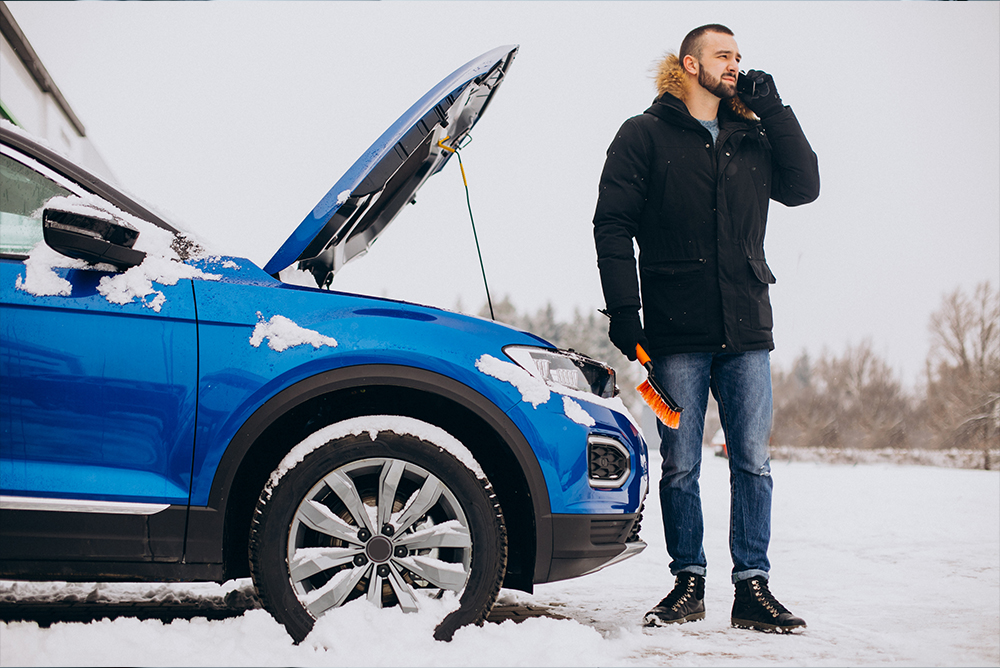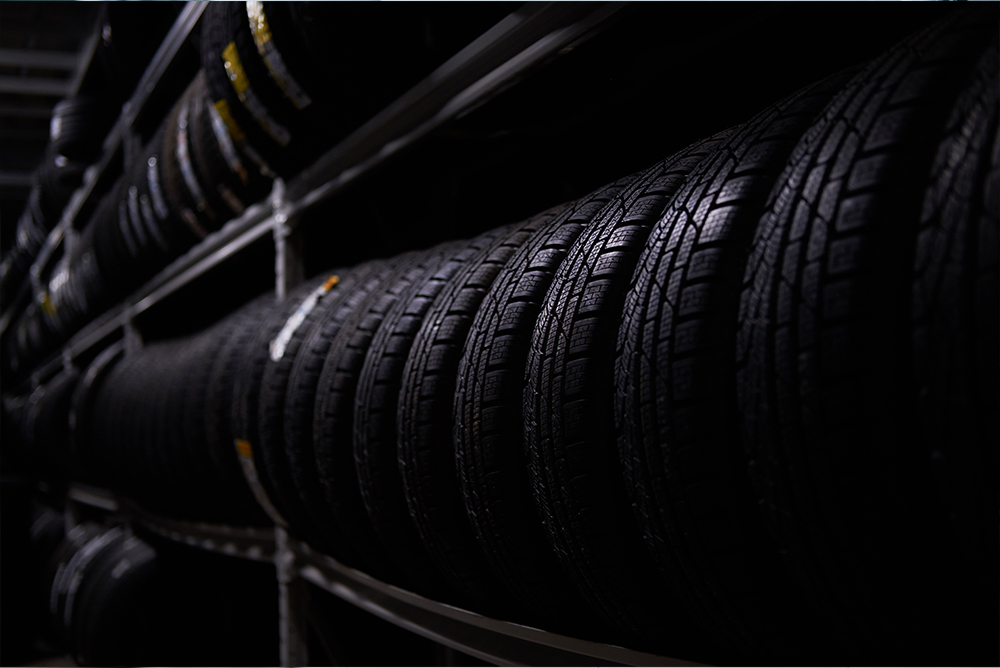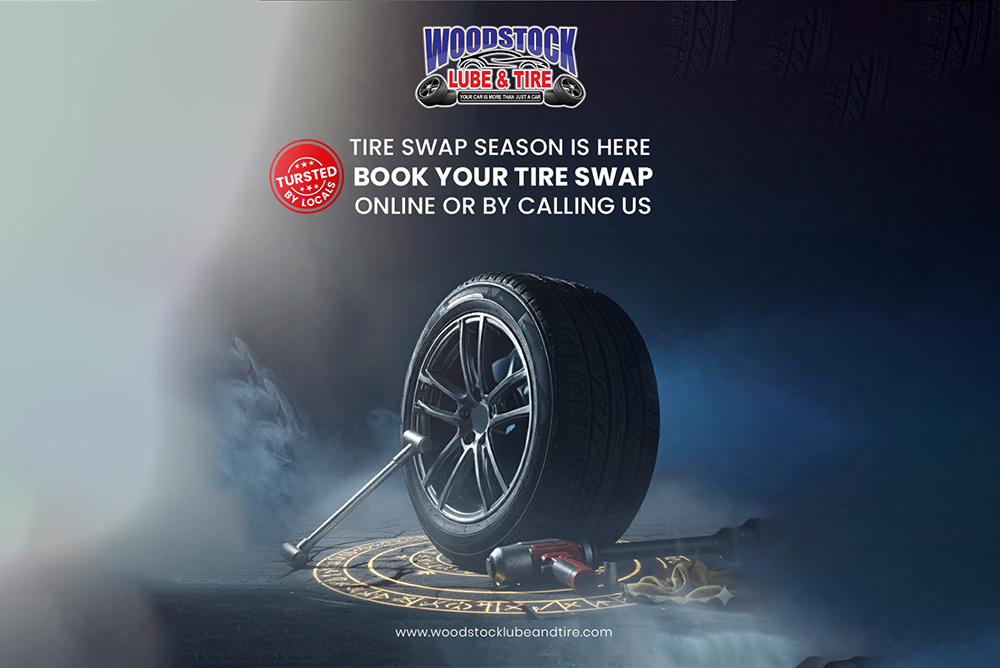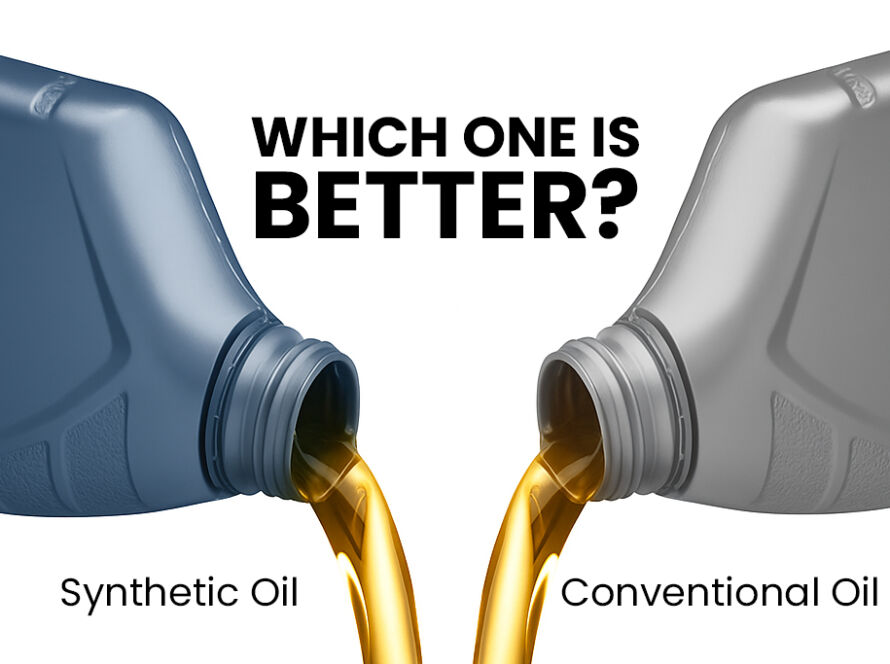Winter Tire Swapping Guide
As the vibrant hues of autumn fade into the stark, beautiful landscape of a Canadian winter, a ritual is begun anew by millions of drivers: the seasonal tire swapping. It’s more than just a chore; it’s a crucial investment in your safety, your vehicle’s performance, and your peace of mind.
Here at Woodstock Lube & Tire in Woodstock, Ontario, we have helped numerous drivers throughout Oxford County and well beyond get ready for the harsh months ahead. This comprehensive guide will walk you through everything you need to know about swapping your tires for winter, transforming this seasonal task from a question mark into a confident and well-informed decision.

Why Bother Tire Swapping? The Non-Negotiable Case for Winter Tires
Many drivers, particularly newcomers to Canada, ask the very simple question: “Are winter tires really necessary?” The answer, based on both science and statistics, is yes. Here’s why:
The Rubber Compound is King:
All-season tires are designed to perform adequately in a wide range of conditions. However, when temperatures consistently drop below 7°C, their rubber compound begins to harden, becoming less pliable and losing grip. Winter tires are made with a specialized, softer rubber compound that remains flexible in the cold. This flexibility is what allows the tire to conform to the road surface, providing superior traction.
Tread Design Matters:
Look at a winter tire next to an all-season. You’ll see a dramatic difference. Winter tires feature deeper, more aggressive tread patterns with thousands of tiny slits called “sipes.” These sipes act like tiny claws, biting into snow and ice to provide grip where all-season tires would simply slide. They also channel slush and water away from the tire’s contact patch, reducing the risk of hydroplaning.
Stopping Distances are Drastically Reduced:
This is the most critical factor. On icy or snow-packed roads, a vehicle with winter tires can stop in up to **30-40% shorter distance** compared to a vehicle with all-season tires. That’s not just a car length; it’s the difference between a safe stop and a collision.
Improved Handling and Control:
It is not just about stopping. Winter tires offer noticeably improved traction during acceleration and cornering, affording greater control and stability in the most undependable winter conditions.

The "When": Timing Your Tire Swap Perfectly
This isn’t just about snow. Your winter tires will grip better on dry, cold pavement than do the hardened all-season tires.
When to Install: A good target is between **mid-October and mid-November**. Don’t wait for the first major snowfall. That’s when everyone panics, and appointment books at shops like ours fill up for weeks.
When to Remove: Plan to change over to your all-season or summer tires when the daily average temperature is expected to consistently stay above 7°C in the spring, usually from mid-March to mid-April.
One helpful reminder that many Canadians use is the “Daylight Saving Time” rule: change your tires when you change your clocks. It’s an easy-to-remember cue that usually falls right in the correct temperature window.
Provincial Laws: Know the Rules of the Road
While safety should be your most important reason, some provinces have made winter tires mandatory during certain months.
Quebec: Mandatory for all vehicles from **December 1 to March 15
British Columbia: Required on most highway routes from **October 1 to April 30
Ontario: although not universally mandatory, the use of winter tires is highly recommended. In addition, installation of such tires can entitle you to an insurance discount from most insurers—check with your company!
Even if your province doesn’t require tire swapping, taking up this safety standard is a sign of a responsible driver.

When it actually comes to making the swap, you have a few options:
Option 1: The Seasonal Tire Swap (on your existing rims)
This is the traditional method. You purchase winter tires, and twice a year, a technician will mount and balance them onto your vehicle’s existing set of rims.
Pros: Lower initial cost (just buy the tires).
Cons: You pay for mounting and balancing twice a year. The repeated process can potentially damage the rim over time.
Option 2: The Winter Tire & Rim Package (the recommended choice)
This is done by buying a set of winter tires already mounted on either a second set of steel or alloy rims.
Pros:
Rim Protection: The original, nicer rims are protected against the corrosive salt, sand, and potholes of winter.
Easy Storage:** It’s often easier to stack and store a mounted set.
Cons: Higher initial investment for the extra set of rims.

The Professional Installation Advantage
Although a do-it-yourself tire change might be considered by some, there are substantial reasons for trusting a professional service like Woodstock Lube & Tire:
Precision Balancing: An unbalanced tire can cause vibrations, uneven wear, and stress on your suspension. We use state-of-the-art road force balancers to ensure a perfectly smooth ride.
Professional Torquing: Lug nuts should be torqued to the exact specification provided by the vehicle’s manufacturer with a calibrated torque wrench. Under-torquing may result in loose wheels, while over-torquing can damage studs.
Crucial Inspection: When we do a swap, we also do a vital visual look at your tires for damage, check tread depth, and inspect your brakes, suspension, and steering components to catch potential problems before they become dangerous.
Proper TPMS Handling: If your car is equipped with a Tire Pressure Monitoring System, our technicians know how to properly reset and calibrate it to avoid annoying warning lights.
Pre-Swap Checklist: Be Prepared!
Before you bring your vehicle in for its swap, a little preparation goes a long way:
1. Check Your Winter Tires: Check visually for any evident damage, cracks, or embedded objects. Check the tread depth-the minimum legally acceptable in Canada is 3.5 millimeters, though for the best winter performance, 6 millimeters or more is advisable.
2. Check Tire Pressure: Make sure your winter tires are inflated to the pressure recommended on your vehicle’s door jamb placard. Cold temperatures cause tire pressure to drop.
3. Schedule Your Appointment Early: Beat the first-snowfall rush by booking your appointment in late September or early October.
4. Consider an Alignment: If you notice pulling or uneven wear on your current tires at the time of replacement, consider having a wheel alignment performed with your swap. Proper alignment ensures your new tires wear even and perform as intended.
Tire Storage 101: Protecting Your Investment
When your off-season tires are not in use, proper storage is key to preserving their lifespan and integrity.
Clean and Dry: Thoroughly clean the tires with soap and water to remove brake dust, dirt, and road salt. Let them dry completely.
Avoid the Elements: Store tires in a cool, dry, and dark area, away from direct sunlight, ozone sources (such as electric motors), and moisture. A climate-controlled basement or garage is ideal.
Proper Positioning: Allow them to be laid horizontally or set upright, provided that they are on rims. If they are unmounted (tires only), store them in an upright position on their tread to prevent distortion. Never hang them or leave them resting on their sidewalls for long periods.
Use Bags: Large, airtight plastic bags can store tires and keep them away from ozone and moisture. Avoid using completely airtight containers as those trap condensation.
Conclusion: Your Safety is Worth the Swap The ritual of the seasonal tire swap is a quintessential part of Canadian life for a very good reason: it works. It’s a simple, proven, and effective way to dramatically increase your safety and control during the most challenging driving months of the year.
Ready for a Safe Winter? Contact Woodstock Lube & Tire in Woodstock, Ontario, today and set up your winter tire swap. Our certified technicians will ensure the job is done right to provide you with the confidence and safety you need on the road. Call us or book your appointment online now.


